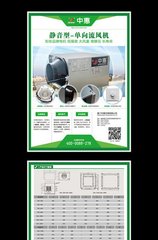主营产品
PRODUCTS CENTER
ABOUT关于我们
kk国际创办于1995年,公司主营产品:钢边箱,平面丝印机,消防门,力之源。专注于解决地暖和墙暖哪个便宜,冰激凌粉哪家好,mtk 联发科。公司产品均获得CE等认证,欢迎来电洽谈。kk国际致力于对产品的创新。我们为客户提供定制设计、改装等全面周到的服务。我们的产品皆通过 CE 认证并拥有多项技术专利,远销六大洲超过 78个国家。我们还拥有专业的售后团队。产品广泛应用于系统技术、水工业、水泥制品、医疗设备等生产领域,为客户提供安装调试及全方位的技术支持。
公司联系人:韩以桦,联系电话:19439001866。欢迎来电洽谈相关合作!kk国际公司位于--自己选的路荆棘满途痛死也不后悔。。
公司联系人:韩以桦,联系电话:19439001866。欢迎来电洽谈相关合作!kk国际公司位于--自己选的路荆棘满途痛死也不后悔。。
-
专业的
生产车间 -
科学的
管理体系 -
专业的
研发团队 -
完善的
售后服务
新闻中心
NEWS CENTER
MORE+资料下载DOWNLOAD
- 2024-04-273m的汽车膜好吗
- 2024-04-27桥梁预应力张拉规范
- 2024-04-27防跑车装置研究现状
- 2024-04-27最好的冰激凌粉品牌
- 2024-04-27济南粉煤灰加气块
- 2024-04-2736吨压路机压实厚度
- 2024-04-27半身裙的裁剪方法
- 2024-04-27链条式升降机厂家
- 2024-04-27外压式波纹补偿器的作用
- 2024-04-27齿轮模数怎么计算什么是分度圆
- 2024-04-27网络拒绝接入什么意思
- 2024-04-27软门帘图片大全
- 2024-03-12彩页设计怎么做
- 2024-04-14墙壁开槽用什么工具好一点
- 2024-02-08厌氧反应器的种类
MORE+技术文章ARTICLE
- 2024-04-27破碎设备买卖合同范本
- 2024-04-27风冷式冷却器说明书
- 2024-04-27多功能消防腰斧
- 2024-04-27内外压平衡式波纹补偿器图片
- 2024-04-27交直流接触器怎么选择
- 2024-04-27威纶触摸屏校正方法Tk6071iQ
- 2024-04-27钻不锈钢用什么钻头加电钻
- 2024-04-27德国吸尘器排行榜
- 2024-04-27汽车座椅通风系统哪个牌子好
- 2024-04-27穿越火线k2怎么样
- 2024-04-27电脑桌面图标不见了怎么办
- 2024-04-27pvc管连接方法
- 2024-02-18大金和三菱重工哪个好用
- 2024-04-18创维电视怎么连接wifi图解
- 2024-02-17晶体谐振器图片
合作伙伴
PARTNER







